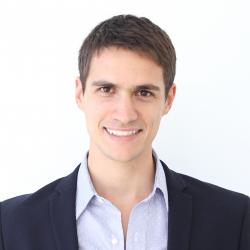Everyone who works in tech wants to be in Silicon Valley at least once. It is known for being the birthplace of numerous companies and technologies, and continues to be a prime location for startups as well as big, established names in the industry. As Making Sense now has its own office in the area, this past month, I was able to attend my very first one: GSV Pioneer Summit.
The event, organized and sponsored by GSV (which stands for ‘Global Silicon Valley’), included a collection of advanced technologies and startups, allowing attendees to explore the most recent trends taking hold. From speakers to demonstrations and discussions, the Pioneer Summit gave a glimpse of what the future of technology will hold.
Keynotes and panels
The event featured a number of speakers, including Anne Wojcicki, CEO and co-founder of DNA service 23andMe, and Ron Johnson, ex-Apple, retail expert and founder of e-commerce organization Enjoy. Guy Kawasaki, entrepreneur and author, and Phil Libin, former Evernote CEO and now chairman, among others.
Wojcicki spoke about the health care industry, how it is shifting toward a more democratic approach and how that means a whole new world for startups. This enables these businesses to have more opportunity in a quickly-changing marketplace that’s growing thanks to new technologies as well as an increase in people’s interest. Wojcicki remarked that there are plenty of opportunities waiting for startups in the healthcare technology industry.
Johnson, former Apple’s VP of Retail Operation told his experience working for Steve Jobs and their innovative ideas behind the Apple Stores. “I could bring a good idea and Steve would take it even further to make it perfect”, Johnson said about the Silicon Valley icon. He also introduced event attendees to his startup, Enjoy, an innovative online retailer that handpicks items and allows customers to schedule a specific time and place for delivery and support in the first steps of the client’s experience. Johnson, a visionary in the retail field, also talked about the future of the industry, and how it’s currently taking shape, and made clear he doesn’t think retail will shift 100% to the digital world.
Guy Kawasaki did an amazing job with his “Art of Start” speech. Among very important tips he mentioned focusing on an MVVVP instead of the most common MVP (Most Valuable Product). The MVVVP stands for “Minimum Viable Valuable Validating Product” a bit more complex than the first but a better way to test an idea. Guy also discussed several tips for entrepreneurs, including best practices for perfecting PowerPoint presentations (including avoiding Microsoft productos, LOL).
As soon as Phil Libin went on stage everybody’s questions were related to the bad last months of Evernote and his decision to step out as CEO. Libin talked about the complexities his company faced recently, and answered the audience’s questions about the reasons behind him leaving Evernote. He said that the difficulties experienced by the business were normal, and weren’t anything out of the ordinary within the startup industry for a company in the stage of Evernote. In the meantime he mentioned he’s still helping the company as Chairman, as well as starting his career as a VC.
Even when their main subject was something else, nearly all the panels and keynotes ended up talking about hot topics in the tech industry, including healthcare, FinTech (financial technology), wearables and VR (virtual reality).
Diversity in Silicon Valley
While the presentations surely showcased the knowledge and skills of these experts, the speaker lineup did not offer the level of diversity it was talked about and many were hoping for. A number of presentations touched on diversity in the technology industry – there were specific panels organized for female entrepreneurs, Latinos and Asians. Although event attendees came from all corners of the globe to participate, this level of cultural variety was not represented by the speaking panels. In GSV Pioneer Summit defense, in most of the talks the topic was usually referred to as an outstanding item.
Taking the Silicon Valley approach
The event’s location also served a special purpose. GSV co-founder and CIO Michael Moe drove home the importance of spreading the Silicon Valley way of doing business to other parts of the world. The Silicon Valley approach, he explained, includes keeping a finger on the pulse of world-changing ideas and concepts, and looking for opportunities to innovate during every step. He also discussed paying it forward, and helping others in the community through their business journey, a very important and unique way of doing business.
Lost network opportunities
While I found the event to be really enlightening and motivational for young people like me, I did notice certain drawbacks when it came to opportunities for networking.
There was an app created specifically for the event, which sent notifications about upcoming keynotes and presentations to users. However, I noticed that not many were using the app. The platform could have been considerably beneficial, especially for those like me, who were newcomers to Silicon Valley and were looking to gather contacts and network.
In addition, the event didn’t offer much physical space for networking either. The lunch area did not have enough seats and tables for everyone in attendance and the result here was that many were unable to eat in the common area, forcing them to lose out on an opportunity to share a meal with others and meet new contacts.
Why I’ll be attending next year
Despite these small issues, I felt the event was a success. I noticed efforts on the part of startups and entrepreneurs to create a better future for the industry with their solutions and innovations. I left the event feeling re-energized, with an insightful glimpse at what the future of the industry could look like. After my first experience with a Silicon Valley event, I feel I have a better understanding not only of the tech sector, but of what makes this location a unique, innovative global hub.
